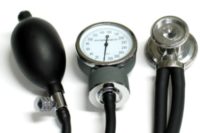 The EPA has a message for you: test your home for radon, fix the problem if you find one – and possibly save your life.
The EPA has a message for you: test your home for radon, fix the problem if you find one – and possibly save your life.
As part of National Radon Action Month, the EPA is urging the public to test homes for high levels of the colorless, odorless gas but dangerous gas. Although it occurs naturally from the decay of uranium in the soil, radon can accumulate to dangerous levels inside the home. Elevated levels of radon are the leading cause of lung cancer among non-smokers and are estimated to kill 21,000 Americans each year.
“Testing for radon is one of the easiest and smartest things people can do to protect their homes and families from this serious health risk,” said Gina McCarthy, assistant administrator for EPA's Office of Air and Radiation. “Addressing high radon levels greatly reduces exposure to the second leading cause of lung cancer.”
Elevated levels of this health hazard in homes, schools, workplaces, and other buildings can be prevented through these simple steps:
- All buildings with or without basements should be tested for radon. Affordable Do-It-Yourself radon test kits are available online and at home improvement and hardware stores, or a qualified radon tester can be hired.
- Fix radon levels at or above 4 picoCuries per Liter (pCi/L) and contacting a qualified radon-reduction contractor.
More on how to test, find a qualified radon professional, obtain a test kit or contact your state radon office: http://www.epa.gov/radon or call 1-800-SOS-RADON
More information on the Federal Radon Action Plan: http://www.epa.gov/radon/action_plan.html


